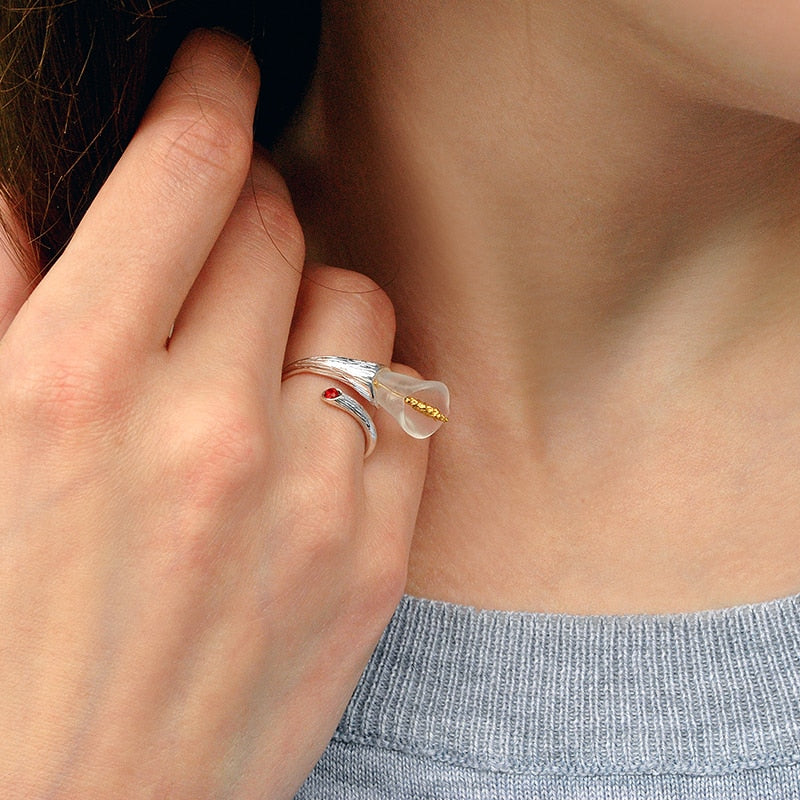Properties of lapis lazuli
Lapis lazuli is a well known and widely used ornamental stone in jewelry and decoration around the world. Its blue color varies in intensity depending on the density of the lazurite, its main component. The most precious stones of Lapis Lazuli have a deep blue color streaked with golden reflections of pyrite. It is important to know that too much pyrite or calcite, another white component of lapis lazuli, tends to lower the quality and value of the stone.
The main deposits of lapis lazuli are found mainly in the north of Afghanistan, in the province of Badakhshan. The Darreh-Zu mine is believed to provide some of the most coveted stones. Other deposits exist around the world, such as those in Chile or those in Canada, the United States, Angola, Russia and others. However, the lapis lazuli mined in these countries would have a lighter blue color and therefore a lower quality than those of Afghanistan.

History of lapis lazuli
Etymologically, lapis lazuli is composed of the word Lapis, which in Latin means stone, and the word lazuli, derived from the Persian lajaward, which means blue. The use of Lapis Lazuli would go back to the mists of time, more than 7000 years ago. The stone has been mentioned in particular in famous myths such as that of Gilgamesh in Mesopotamia. They adorned the sarcophagi and jewels of ancient Egypt, or the ornaments of the Persian empire. There are also references to lapis lazuli in the Bible, further proof of the value of this one-of-a-kind stone over the centuries.
Modern archeology clearly demonstrates that the lapis lazuli trade was highly developed and widespread since ancient times. The monopoly of this trade was the subject of constant wars between the city-states of Mesopotamia. This demonstrates the importance of this stone in the daily life of the time and its impact on the prestige, sophistication and wealth of this civilization.
In the city of Nostra, for example, in southern Mesopotamia, excavations have unearthed tombs attributed to kings and notables containing rich objects in lapis lazuli such as statuettes depicting animals or deities, cylindrical seals or jewels richly decorated with this stone.
The name of lapis lazuli has changed a lot over the centuries. In Roman antiquity Pliny gave the name of sapphire to this blue material studded with gold, especially for the golden traces of pyrite. Later the stone would take the names of ultramarinum and lazurium, the origin of the word azure in French.
Virtue of lapis lazuli
The uses of lapis lazuli have varied according to the times, including its aphrodisiac virtues in Roman times or its fortifying benefits for organs and limbs, or its preventive effects against fear, doubt and envy in the Middle Ages.
Lithotherapy attributes undeniable virtues to lapis lazuli on the human body, especially when it comes to remedying skin, scalp or vision problems. Lapis lazuli is also recognized for its beneficial action in reducing fevers and high blood pressure and nervous disorders. The energy virtues of lapis lazuli can effectively remedy sore throats, migraines, dizziness, as well as insomnia, blood circulation disorders and some forms of allergies ...
The quintessential calming stone, lapis lazuli is ideal for fighting depression. The lapis lazuli elixir is particularly suitable for counteracting the problems of shyness and lack of self-confidence. It is the remedy for introverts who try to stimulate their sense of communication and to "enhance" their expression, to overcome its limits.
If it promotes communication and sympathy around oneself by stimulating positive feelings of love and friendship, lapis lazuli is also a stone of understanding oneself and others and of harmonizing human feelings. Favorable to wisdom and meditation, it is a formidable tool for extrasensory awakening, it helps to better remember dreams and above all to see their hidden meaning and to decipher their often hermetic messages.
In astrology, lapis lazuli is particularly suited to the signs of Aquarius, Pisces and Sagittarius. The lapis lazuli planets are Mercury and Jupiter. His day is Wednesday.
On a karmic level, lapis lazuli acts on the Vertex chakra and on the third eye, its action is mainly at the level of the higher chakras.










